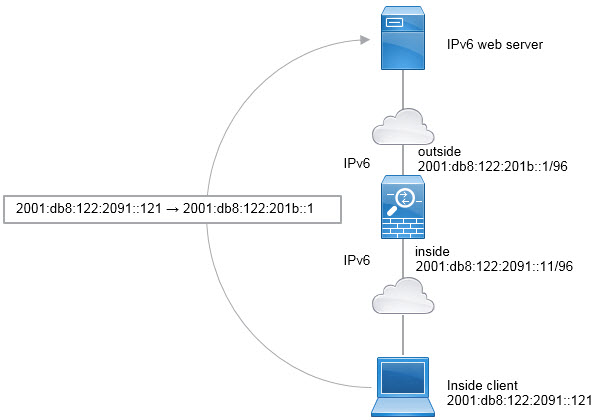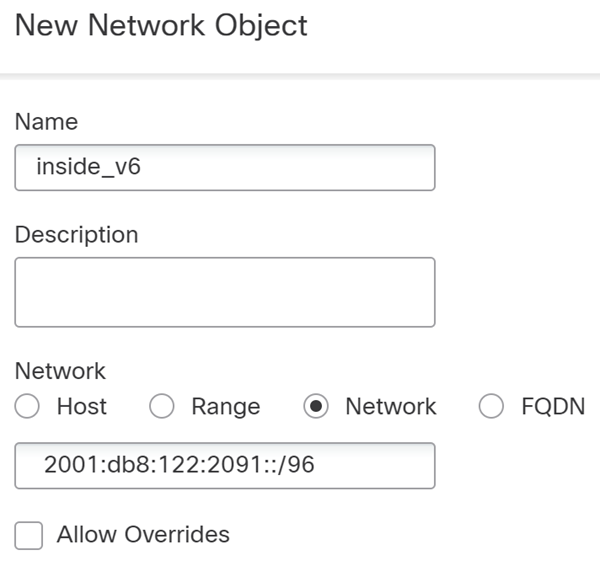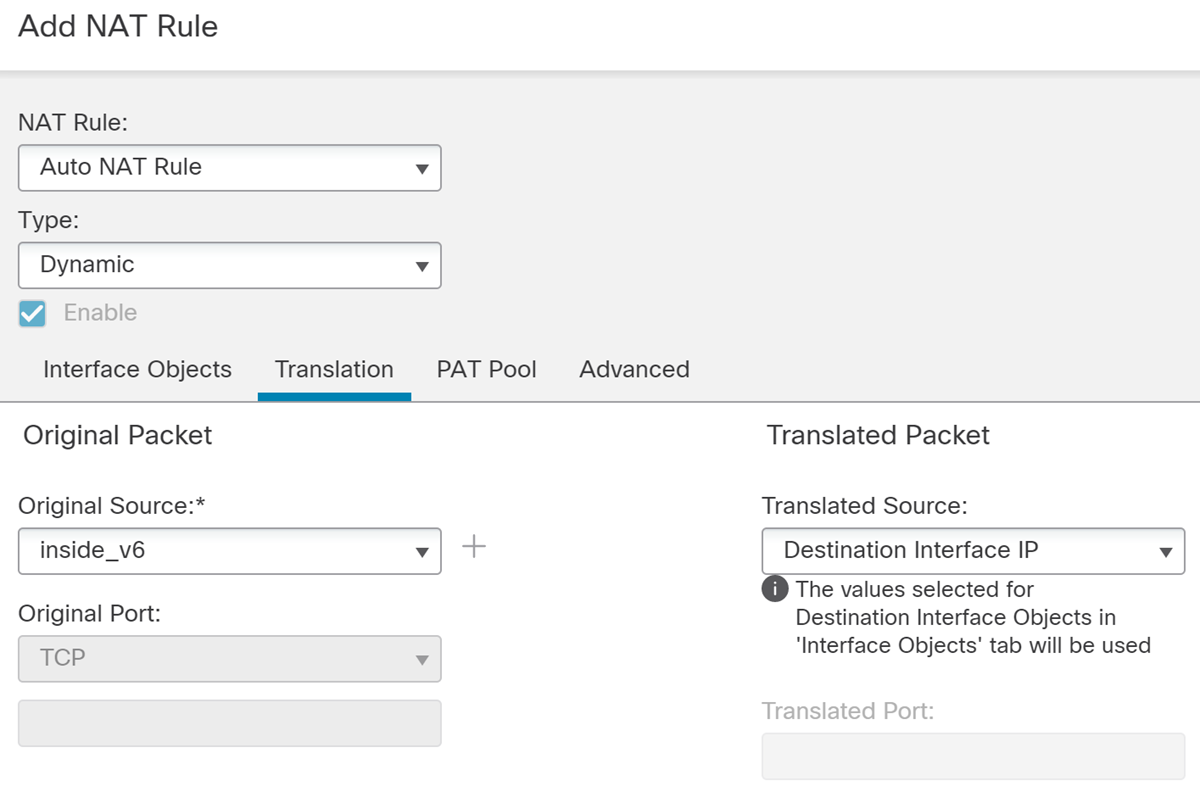NAT66 Example, Simple IPv6 Interface PAT
A simple approach for implementing NAT66 is to dynamically assign internal addresses to different ports on the outside interface IPv6 address.
When you configure an interface PAT rule for NAT66, all the global addresses that are configured on that interface are used for PAT mapping. Link-local or site-local addresses for the interface are not used for PAT.

Before you begin
Ensure that you have interface objects (security zones or interface groups) that contain the interfaces for the device. In this example, we will assume the interface objects are security zones named inside and outside. To configure interface objects, select .
Procedure
Step 1 | Create the network object that defines the inside IPv6 network. |
Step 2 | Configure the dynamic PAT rule for the inside IPv6 network. |

